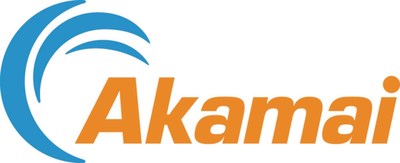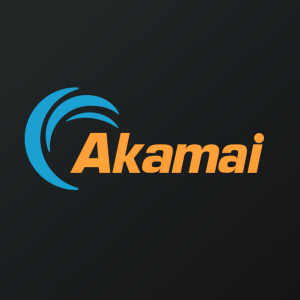Akamai Research Finds 137 Percent Increase in Application and API Attacks
Akamai Technologies, Inc. (NASDAQ: AKAM) released its State of the Internet report focusing on the surge in application and API attacks, which increased by 137% over the past year. The report highlights Local File Inclusion (LFI) as the leading attack vector, showing a 193% year-over-year growth. Emerging threats like Server-Side Template Injections (SSTI) and Server-Side Request Forgery (SSRF) were noted, with a daily average of 14 million SSRF attempts. The report also emphasizes Broken Object Level Authorization (BOLA) as a significant concern. Key findings indicate an 82% rise in attacks on the healthcare sector and a 76% increase in manufacturing. Akamai provides insights and mitigation strategies for organizations to combat these growing threats.
- Report highlights a significant increase in demand for application security, underscoring Akamai's role in a critical industry.
- Akamai's report identifies specific, actionable strategies for mitigating emerging threats, showcasing expertise.
- 137% increase in application and API attacks could indicate a growing vulnerability for clients, potentially damaging trust.
- Healthcare and manufacturing sectors experienced substantial attack growth, which may lead to increased costs for clients.
New Report Focuses on Emerging Threats Such as BOLA and SSTI
Last year was another record-breaking year for application and API attacks as they grew by 137 percent. This is a major concern since organizations are adopting more web applications and APIs to enhance their business and increase ease of use for customers. The report finds that Local File Inclusion (LFI) remains the top attack vector with year-over-year growth of 193 percent.
The new Akamai research also provides details on several emerging attack vectors such as Server-Side Template Injections (SSTI). With this technique, attackers abuse notable vulnerabilities such as Log4Shell, Spring4Shell and the Atlassian confluence vulnerability. SSTI poses serious business risks as attacks can lead to remote code execution and data exfiltration. Server-Side Request Forgery (SSRF) attacks are another up-and-coming attack vector that poses a substantial threat to organizations. Akamai observes a daily average of 14 million SSRF attempts against our customers' web applications and APIs.
In addition, Security Gaps: The Rise of Application and API Attacks spotlights Broken Object Level Authorization (BOLA). The top concern in the API threat landscape according to the OWASP API Top 10, BOLA is a simple, yet high risk attack that enables access to the information of other users. The report offers guidance and best practices around mitigating this growing vulnerability.
Other main findings of the report include:
- Attacks on the healthcare industry grew by 82 percent. The adoption of the Internet of Medical Things (IoMT) in the healthcare sector expands the attack surface of this vertical and could lead to increased vulnerabilities.
- Median attacks on the manufacturing sector grew by 76 percent due to the proliferation of Internet of Things (IoT) connections and the massive data collected from equipment in this sector. Successful cyberattacks against operating technologies in this industry enable real-world impacts like supply chain issues.
- The new proposed OWASP API Top 10 emphasizes the divergence of attack vectors between web applications and APIs.
- API attacks directed at the business logic of the API are complicated to detect and mitigate and cannot be determined at the individual request level. Pre-existing knowledge is required, such as the specific business logic and the resources accessible by each user.
- Webshells allow for a simple and effective way to interact with web servers as they are stealthier than regular shells and present an attractive arsenal for attackers. Trending webshells discussed in the report include the China Chopper and Behinder webshells.
"As cybercriminals evaluate who provides the best return on investment based on the level of effort, the value of data or the likelihood of paying extortion, we often see shifts in attack trends," said
For additional information, the security community can access, engage with, and learn from Akamai's threat researchers by visiting the Akamai Security Hub and following the team on Twitter at @Akamai_Research.
About Akamai
Akamai powers and protects life online. Leading companies worldwide choose Akamai to build, deliver, and secure their digital experiences — helping billions of people live, work, and play every day. With the world's most distributed compute platform — from cloud to edge — we make it easy for customers to develop and run applications, while we keep experiences closer to users and threats farther away. Learn more about Akamai's security, compute, and delivery solutions at akamai.com and akamai.com/blog, or follow
Contacts
Akamai Media Relations
703.907.9103
jlubinsk@akamai.com
![]() View original content to download multimedia:https://www.prnewswire.com/news-releases/akamai-research-finds-137-percent-increase-in-application-and-api-attacks-301799102.html
View original content to download multimedia:https://www.prnewswire.com/news-releases/akamai-research-finds-137-percent-increase-in-application-and-api-attacks-301799102.html
SOURCE
FAQ
What did Akamai's recent report reveal about application and API attacks?
When was the Akamai report on security threats released?
What are some emerging threats mentioned in Akamai's report?
How much did application and API attacks grow in the healthcare sector according to Akamai's report?








